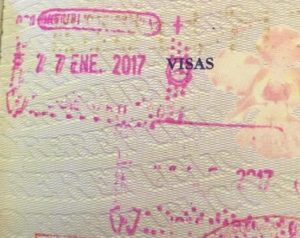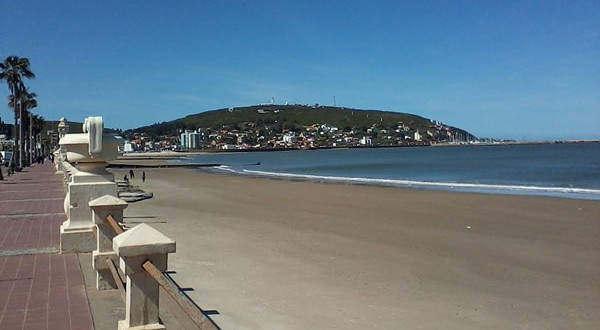 IN FOUR MONTHS MORE THAN 2,000 CUBANS HAVE REQUESTED REFUGEE STATUS IN URUGUAY.
IN FOUR MONTHS MORE THAN 2,000 CUBANS HAVE REQUESTED REFUGEE STATUS IN URUGUAY.
In what we have passed since 2018 to Uruguay, the number of Cubans has already shot up to a total of 2,025 Cubans seeking refuge, according to recent data published by the Uruguayan newspaper El Observador.
In 2015, only 9 applications were received, 370 in 2016 and it was in 2017 that the figure rose sharply to 2146, a rise especially motivated by the elimination of the policy of “Dry feet, wet feet”, decreed by the former US president Barack. Obama in January 2017.
The partial numbers of the first four-month period of 2018 predict a significant increase in the total number of Cuban migrants to Uruguay through Brazilian territory. Myriam Coitinho, director of Migrations of that country and member of the International Affairs Committee of the Senate, explained that the majority of Cubans do the procedures in the “dry border”. Law 18.076 of Uruguay establishes the “right to refuge and refugees”, and states that migration officials are obliged to accept all refugee applications filed at the border. Soon they are derived to a dependent commission of the Ministry of Outer Relations and in that instance it is evaluated if it is approved or not, in a maximum term of 90 days, in which the Cubans remain in a “legal” status of waiting.
The aforementioned official explained that as Cubans know that in most cases their requests will be rejected – due to the economic and non-political nature of the migration – what they do is change the strategy.
Steps to take refuge in Uruguay.
First, they opt to renounce the process to become refugees and then try to regularize their situation through other means, almost always taking advantage of the various facilities that the Uruguayan Migration Law proposes.
The aforementioned media has revealed that 3,980 Cubans out of the 4,365 who requested refuge between 2015 and 2018 resigned from that process, but then they applied for the visa and ended up regularizing their situation. Of the 3980 visa applicants, 2,770 were approved. The NGO “Idas y Vueltas” is one of the most sought by Cubans when it comes to receiving help and advice on immigration matters, once they are on Uruguayan soil. And in fact it is through this route that many citizens of the Island end up finding work in Uruguay.
Entire Cuban families are embarking on a journey that covers 7 thousand kilometers and that in just over a week leads them to enter Uruguay through the dry border of Rivera-Santana Do Livramento.
First the Cubans travel to Guyana, which is the only country in South America that does not require a visa, then they cross the border with Brazil illegally, and from there they travel by land (or even by plane) to Livramento, from where they penetrate to territory Uruguayan.
 MÁS DE 2,000 CUBANOS SOLICITAN REFUGIO EN EL URUGUAY.
MÁS DE 2,000 CUBANOS SOLICITAN REFUGIO EN EL URUGUAY.
En lo que llevamos transcurrido de 2018 hacia el Uruguay la cifra de cubanos se ha disparado ya a un total de 2.025 cubanos solicitantes de refugio, según datos recientes publicados por el diario uruguayo El Observador.
En 2015 fueron recibidas apenas 9 solicitudes, 370 en 2016 y fue en 2017 que la cifra se elevó abruptamente a 2146, subidón motivado especialmente por la eliminación de la política de “Pies secos, pies mojados”, que decretó el ex-presidente norteamericano Barack Obama en enero de 2017.
La citada funcionaria ha explicado que como los cubanos saben que en la mayor cantidad de casos sus solicitudes serán rechazadas ―por la naturaleza económica y no política de la migración― lo que hacen es cambiar la estrategia.
Pasos de los Cubanos utilizados para refugiarse en el Uruguay.
Los números parciales del primer cuatrimestre de 2018 auguran una importante subida en la cifra total de migrantes cubanos a Uruguay a través de territorio brasileño. Myriam Coitinho, directora de Migraciones de ese país y miembro de la Comisión de Asuntos Internacionales del Senado, ha explicado que la mayoría de los cubanos hacen los trámites en la “frontera seca”.
La Ley 18.076 de Uruguay establece el “derecho al refugio y a los refugiados”, y plantea que los funcionarios de migraciones están obligados a aceptar todas las solicitudes de refugio que se presenten en la frontera. Luego son derivadas a una comisión dependiente del Ministerio de Relaciones Exteriores y en esa instancia se evalúa si se aprueba o no, en un plazo máximo de 90 días, en el cual los cubanos permanecen en un estatus “legal” de espera.
Primero optan por renunciar al trámite para ser refugiados y a continuación intentan regularizar su situación por otras vías, casi siempre aprovechándose de las diversas facilidades que la Ley de Migración uruguaya plantea.
El citado medio ha revelado que 3.980 cubanos de los 4.365 que solicitaron refugio entre 2015 y 2018 renunciaron a ese trámite, pero luego solicitaron la visa y acabaron regularizando su situación. De los 3980 solicitantes de visado, 2.770 fueron aprobados. La ONG “Idas y Vueltas” es una de las más buscadas por los cubanos a la hora de recibir ayuda y asesoramiento en materia migratoria, una vez que están en suelo uruguayo. Y de hecho es a través de esa vía que muchos ciudadanos de la Isla acaban encontrando trabajo en Uruguay.
Familia cubanas enteras están emprendiendo una travesía que abarca 7 mil kilómetros y que en poco más de una semana los lleva a entrar en Uruguay a través de la frontera seca de Rivera-Santana Do Livramento.
Primero los cubanos viajan a Guyana, que es único país de América del Sur que no exige visado, luego cruzan de forma ilegal la frontera con Brasil, y de allí viajan por tierra (o incluso en avioneta) hasta Livramento, desde donde penetran a territorio uruguayo.
Agencies/CiberCuba/Internet Photos/ Arnoldo Varona/ TheCubanHistory.com
THE CUBAN HISTORY, HOLLYWOOD.





